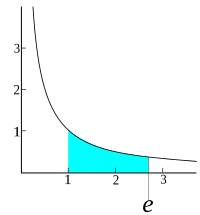
Complement Evasion Contributes to Lyme Borreliae-Host Associations.
Sign Up to like & getrecommendations! Published in 2020 at "Trends in parasitology"
DOI: 10.1016/j.pt.2020.04.011
Abstract: Lyme disease is the most common vector-borne disease in the northern hemisphere and is caused by spirochetes of the Borrelia burgdorferi sensu lato complex. Lyme borreliae infect diverse vertebrate reservoirs without triggering apparent manifestations in… read more here.
Keywords: borreliae host; evasion; borreliae; host associations ... See more keywords

Surveillance of British ticks: An overview of species records, host associations, and new records of Ixodes ricinus distribution.
Sign Up to like & getrecommendations! Published in 2018 at "Ticks and tick-borne diseases"
DOI: 10.1016/j.ttbdis.2018.01.011
Abstract: Public Health England's passive Tick Surveillance Scheme (TSS) records the distribution, seasonality and host associations of ticks submitted from across the United Kingdom (UK), and helps to inform the UK government on emerging tick-borne disease… read more here.
Keywords: surveillance british; ixodes ricinus; host associations; host ... See more keywords

Host associations of biting midges (Diptera: Ceratopogonidae: Culicoides) at deer farms in Florida, USA
Sign Up to like & getrecommendations! Published in 2023 at "Journal of Medical Entomology"
DOI: 10.1093/jme/tjad036
Abstract: Documenting the host use of vector species is important for understanding the transmission dynamics of vector-borne pathogens. Biting midges (Diptera: Ceratopogonidae: Culicoides) are vectors of epizootic hemorrhagic disease virus (EHDV) and bluetongue virus (BTV) worldwide.… read more here.
Keywords: host associations; deer farms; white tailed; tailed deer ... See more keywords

Review of the biology and host associations of the wasp genus Gasteruption (Evanioidea: Gasteruptiidae)
Sign Up to like & getrecommendations! Published in 2020 at "Zoological Journal of the Linnean Society"
DOI: 10.1093/zoolinnean/zlaa005
Abstract: Gasteruption is an easily recognized genus of wasps whose larvae are predator-inquilines in the nests of cavity-nesting solitary bees (Apidae, Colletidae, Halictidae and Megachilidae), with some records for solitary wasps as hosts (Crabronidae, Vespidae and… read more here.
Keywords: biology host; host associations; biology; host ... See more keywords

Additions of host associations and new records of bat ectoparasites of the families Spinturnicidae, Nycteribiidae and Streblidae from Honduras
Sign Up to like & getrecommendations! Published in 2021 at "Check List"
DOI: 10.15560/17.2.459
Abstract: We captured mormoopids, phyllostomids, and vespertilionids in Honduras to collect bat ectoparasites. Two species of Spinturnicidae (Acari) are the first reports of this family in Honduras. One species of Basilia Miranda Ribeiro, 1903, and four… read more here.
Keywords: bat ectoparasites; bat; host associations; nycteribiidae streblidae ... See more keywords

A Review of the Ecomorphology of Pinnotherine Pea Crabs (Brachyura: Pinnotheridae), with an Updated List of Symbiont-Host Associations
Sign Up to like & getrecommendations! Published in 2020 at "Diversity"
DOI: 10.3390/d12110431
Abstract: Almost all pea crab species in the subfamily Pinnotherinae (Decapoda: Brachyura: Pinnotheridae) are considered obligatory endo- or ectosymbionts, living in a mutualistic or parasitic relationship with a wide variety of invertebrate hosts, including bivalves, gastropods,… read more here.
Keywords: brachyura pinnotheridae; updated list; symbiont host; host associations ... See more keywords